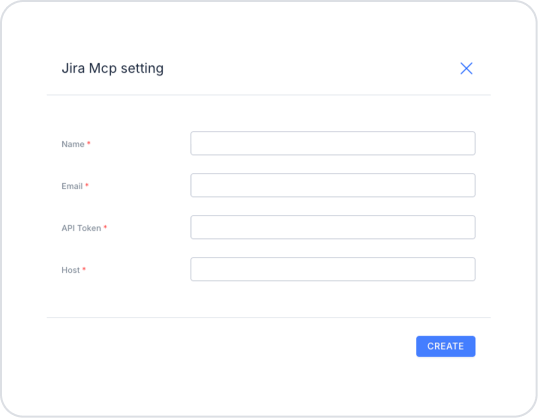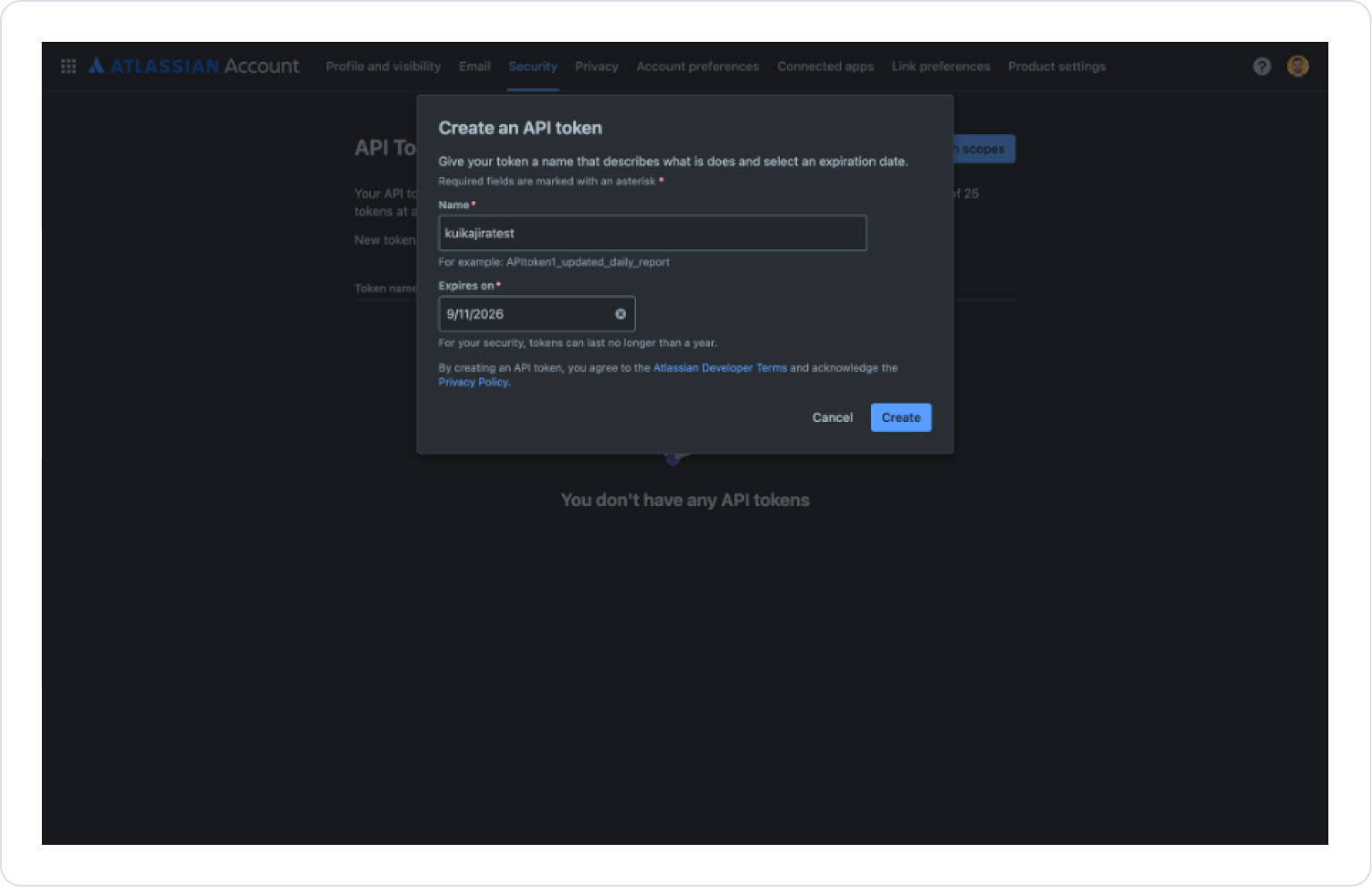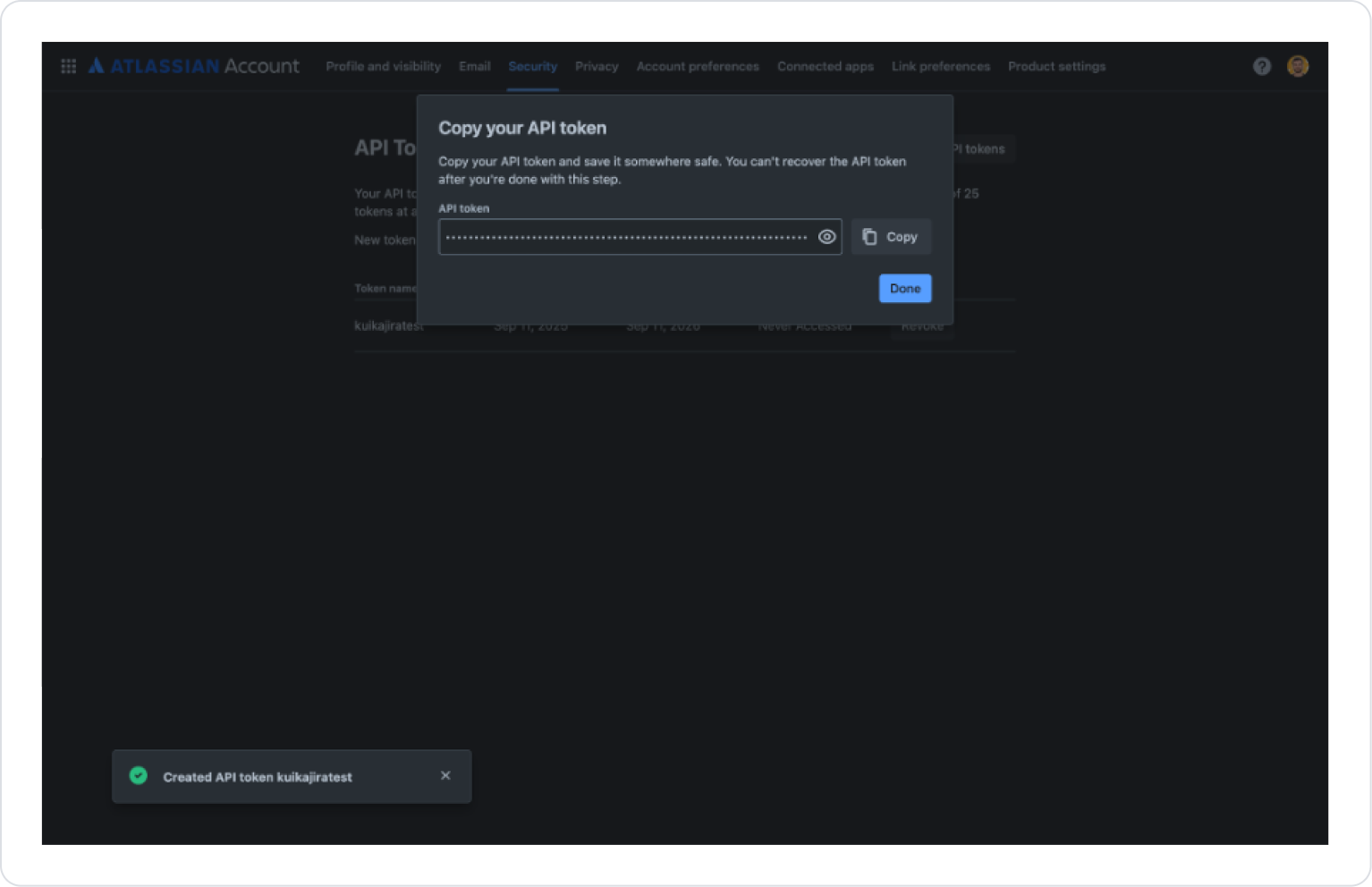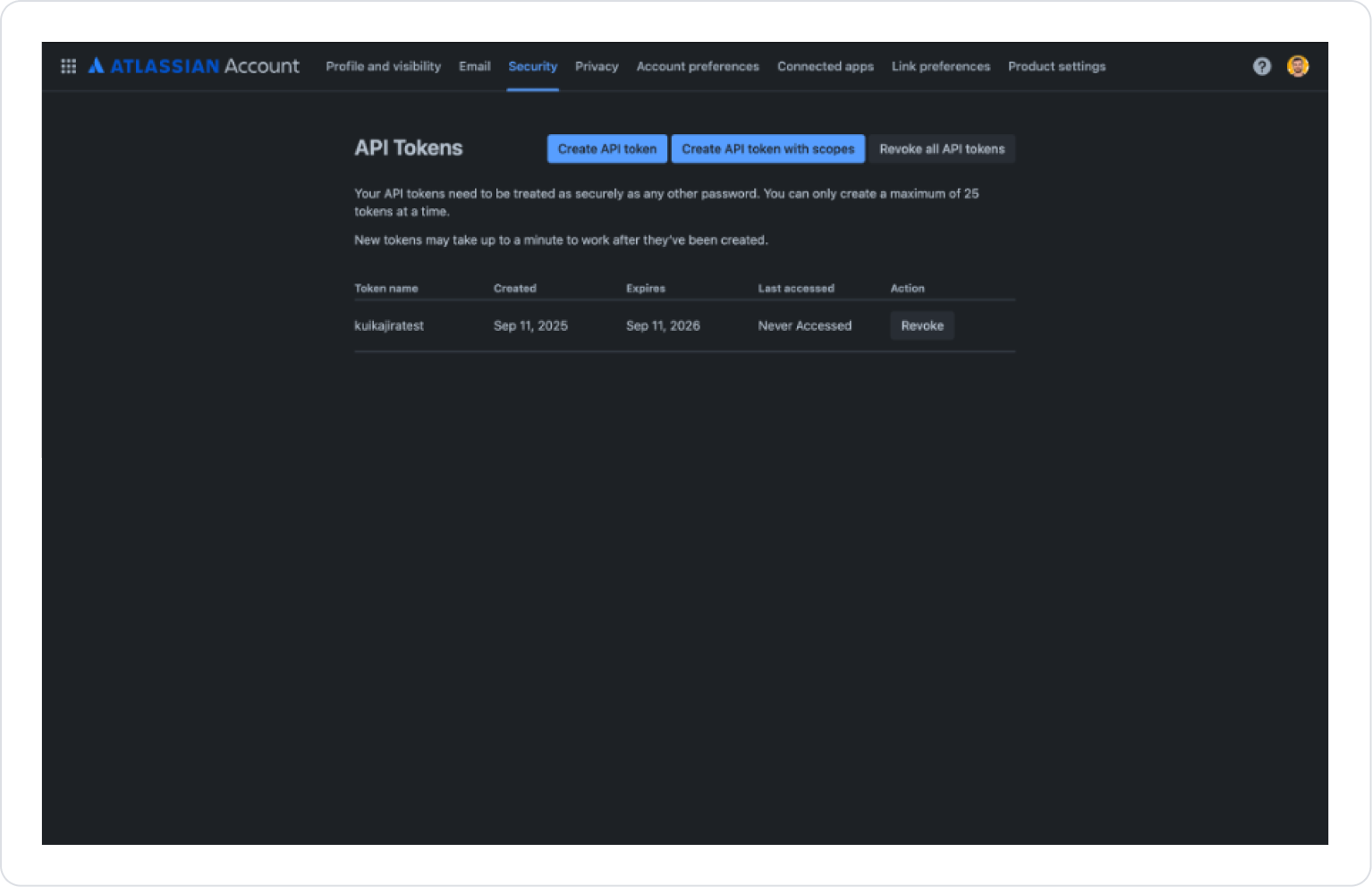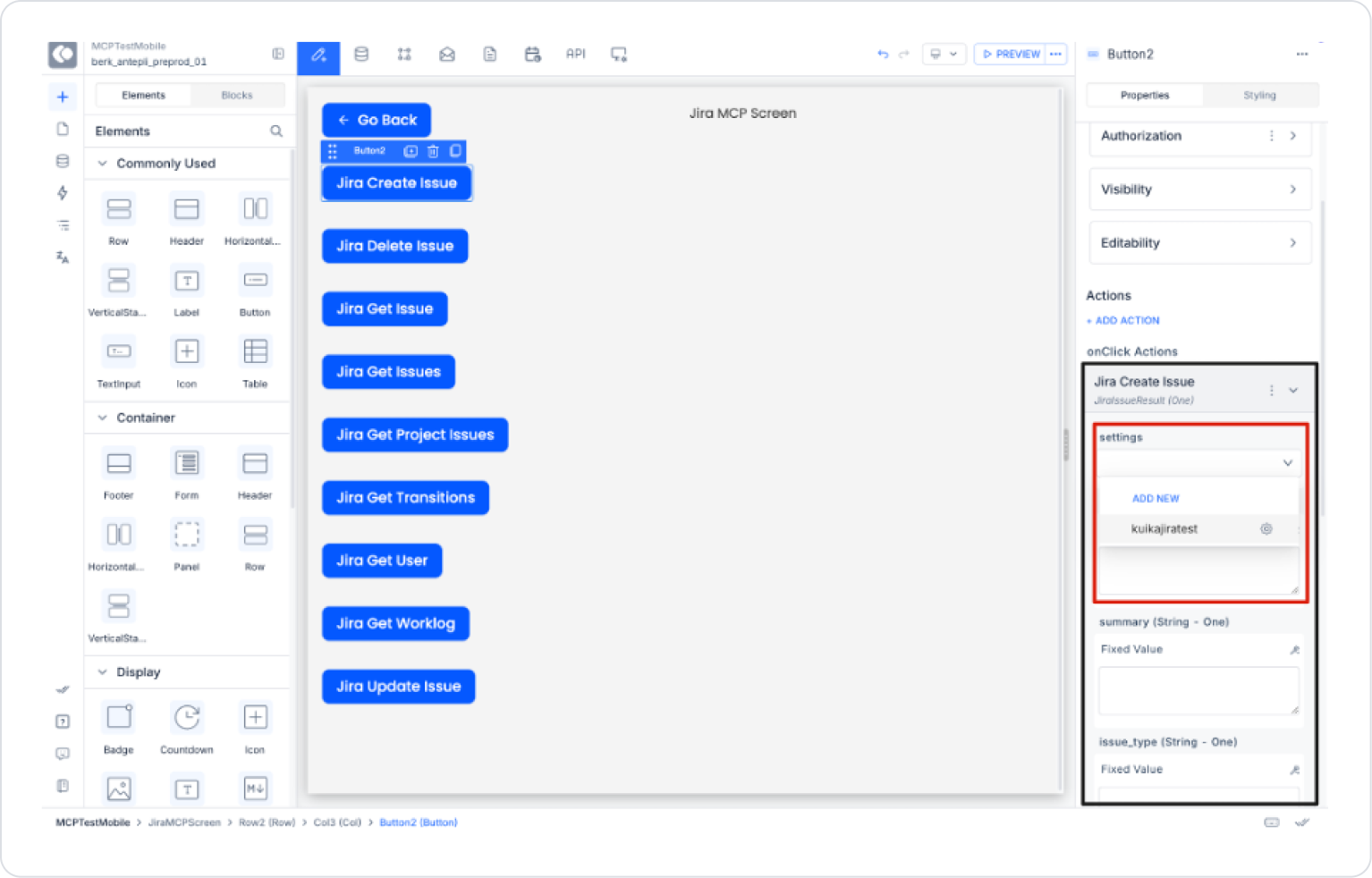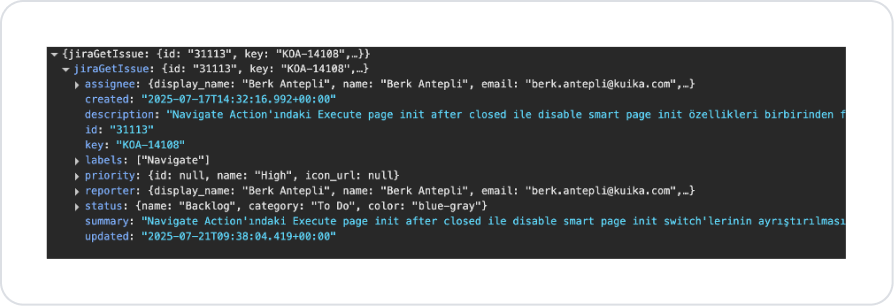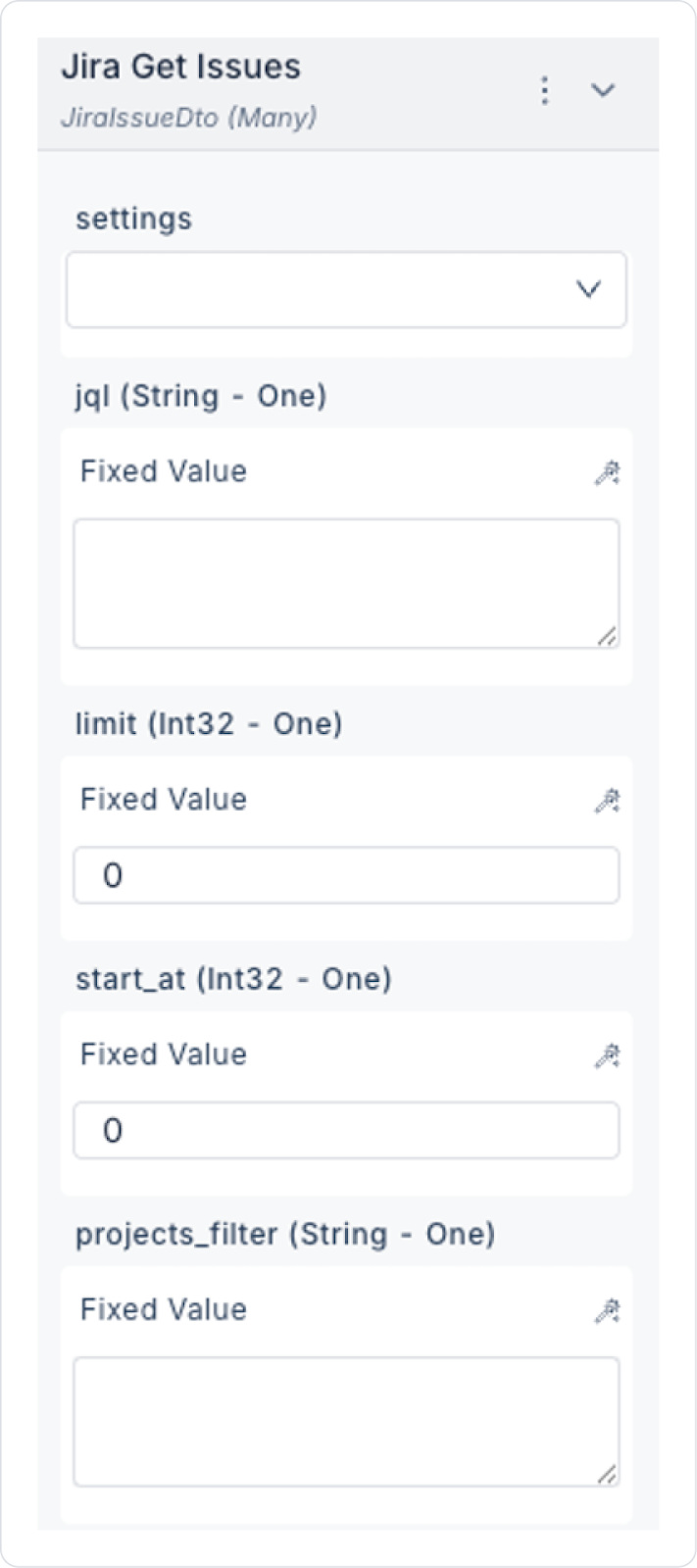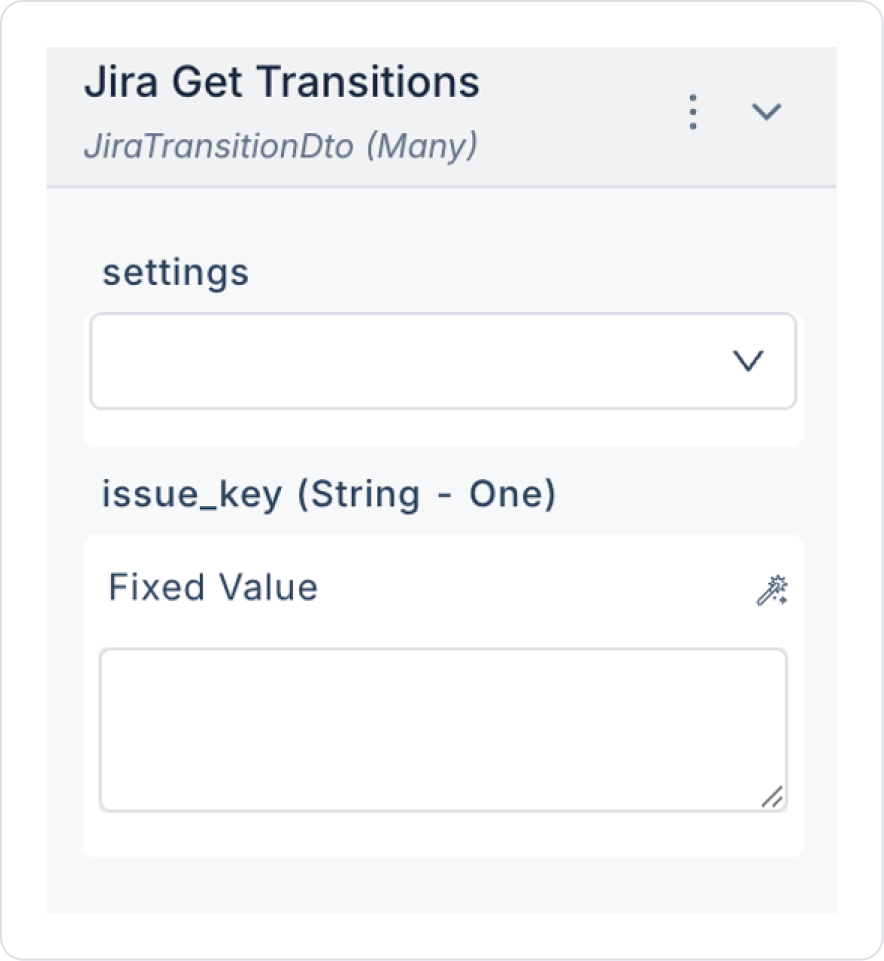Overview
Jira MCP enables your Kuika application to interact directly with the Jira API . This allows issue management, user information, worklog, and project-based queries to be performed in a standardized manner via MCP.
Configuring Settings via Configuration Manager Log in to the Kuika platform. Select the project you will be working on from the Apps screen. Go to the Configuration Manager → App Settings tab. Click ADD NEW in the MCP → Jira section. In the window that opens: Name: A distinctive name to be given to the integration.Email: The email address associated with your Jira (Atlassian) account.API Token: The token created via Atlassian.Host: The Jira URL (e.g., https://your-domain.atlassian.net). Creating a Jira API Token Go to Atlassian API Tokens . Click the Create API token option. Name: Enter a descriptive name for the token.Expires on: Set the token's validity period. Click the Create button.
The generated token will be displayed on the screen → Copy it using Copy . The token is only displayed once. Paste it into the Jira MCP Settings screen in Kuika. Action Types Jira Delete Issue
Deletes an issue.
Input
settings → Jira setting issue_key → Issue to be deleted (e.g., “TEST-123”) Output
“ok”: true, ‘message’: “Issue TEST-123 has been deleted successfully.” Error statuses: 404 (not found), 403 (no permission), 400 (invalid input). Jira Get Issue
Retrieves information about a specific issue.
Input
settings → Jira settings issue_key → Issue key (e.g., “PROJ-45”) update_history → true → change history (changelog) is also returned. Output
summary → Short title description → Description assignee → Assigned user information (display_name, email, avatar_url, name) reporter → Reporting user information status → Current status (name, category, color) priority → Priority information (id, name, icon_url) labels → Added labels created, updated → Dates id, key → Issue ID and Key Jira Get Issues
Retrieves an issue list using JQL (Jira Query Language).
Input
settings → Jira settings jql → E.g.: project = KOA AND assignee = currentUser() ORDER BY created DESC limit → Maximum results (default 50, max 100) start_at → Pagination start projects_filter → Example: [“APP”, “HR”] Output
For each issue:
key, summary, description status → (id, name, category, color_name, icon_url) priority → (id, name, icon_url) issue_type → (id, name, description, icon_url) assignee, reporter → User information (display_name, email, avatar_url) labels → Added labels custom_fields → Custom Jira fields (customfield_XXXXX) created, updated → Dates url → Issue link Jira Get Project Issues
Retrieves all issues for a specific project.
Input
settings → Jira settings project_key → Project key (e.g., “APP”) limit, start_at → Number of results and pagination Output
Has the same structure as Get Issues (summary, key, status, priority, assignee, reporter, etc.). Jira Get Transitions
Lists the workflow statuses a specific issue can transition to.
Input
settings → Jira settings issue_key → e.g., “TEST-123” Output
transitions list (id, name, to status information for each transition). Jira Get User
Returns user information.
Input
settings → Jira settings user_identifier → accountId, username, or email Output
success → true/false user → User information: display_name, email, avatar_url, name Jira Get Worklog
Retrieves the worklog information for an issue.
Input
settings → Jira setting issue_key → E.g.: “PROJ-45” Output
id → Worklog ID comment → Description author → User information timeSpent, timeSpentSeconds → Time spent created, updated, started → Date information Usage in Kuika
Jira settings created in Configuration Manager can be used by linking them to the settings parameter in the Jira Action in the project.
Example scenarios:
Viewing specific issue details → Get Issue Retrieving a project-based issue list → Get Project Issues Querying tasks assigned to a user → Get Issues (JQL) Checking issue workflow transitions → Get Transitions Creating a worklog report → Get Worklog 

